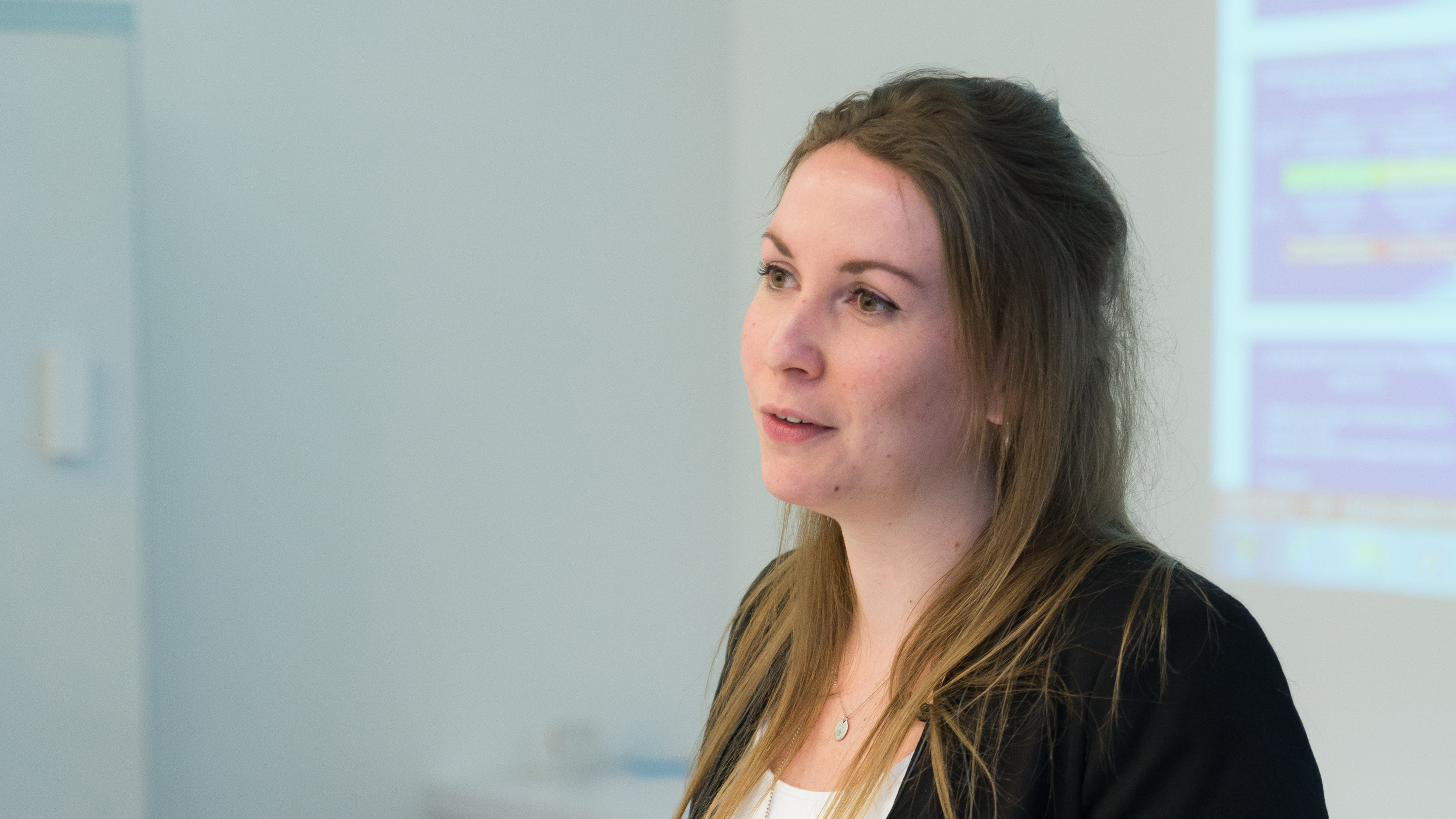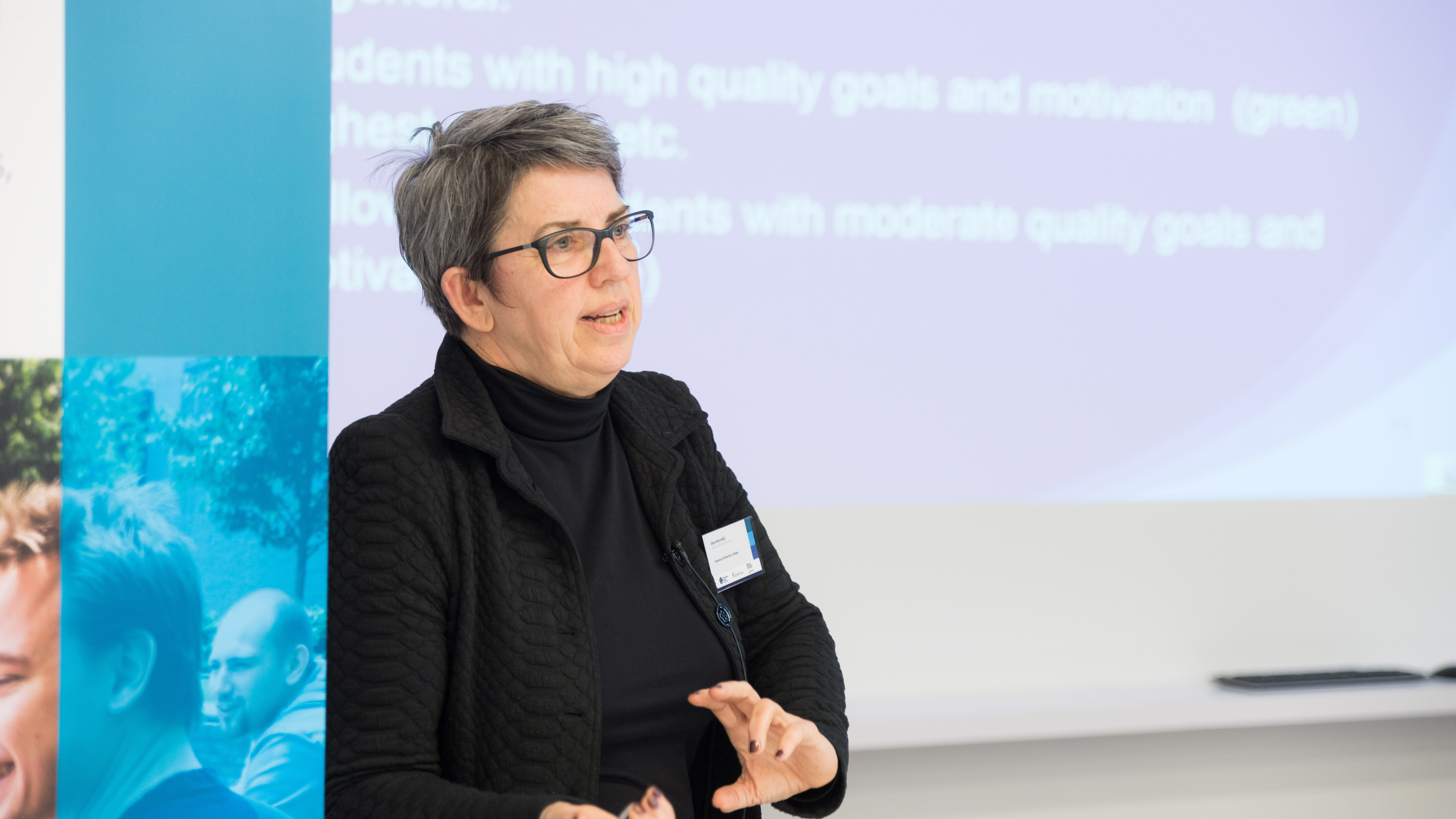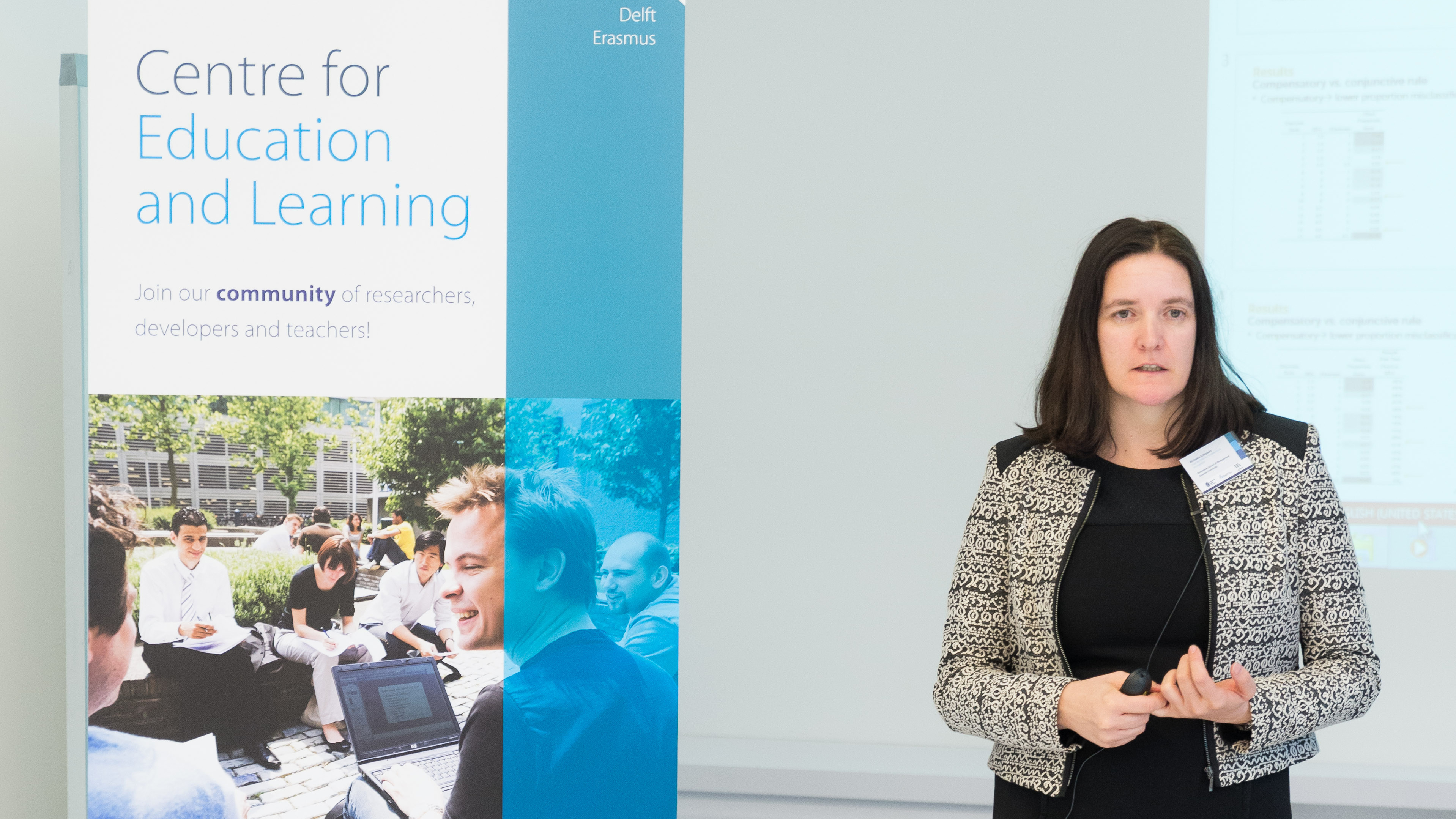Marit Wijnen - Problem-Based Learning and Study Success
Problem-based learning (PBL) has been implemented at the Erasmus School of Law in recent years. This instructional method is student-centered and typified by starting with a realistic problem statement that has to be solved by collaboration in small groups under the guidance of a tutor.
PBL is assumed to influence students' motivation and study strategies, specifically self-regulation and deep processing. In order to validate these assumptions, Marit Wijnen compared third-year Dutch law students in a lecture-based program (non-PBL) and third-year PBL Dutch law students.
She found the following:
- PBL students showed more deep processing, most likely because they are stimulated to connect different topics, concepts and problems.
- PBL students showed more self-regulation, since they have more responsibilities, need to plan a lot and prepare every meeting.
- PBL students showed more external regulation (guidance from others). Tutors and fellow students have an influence on PBL students.
Wijnen also did a second study on motivation, comparing the same two groups of students (PBL and non-PBL), because PBL is assumed to stimulate autonomy, competence and relatedness, which result in higher motivation based on the Self-Determination Theory.
She found the following:
- No differences on autonomous and controlled motivation.
- No differences on feelings of autonomy and competence. The mandatory attendance of PBL students actually had a negative effect on feelings of autonomy.
- PBL students did have higher feelings of relatedness, possibly due to working in small groups.
Gera Noordzij - Self-Regulation of Students at Erasmus University College and the Relationship with Their Study Success
In her research, Gera Noordzij tries to answer the following question: does motivation predict academic results?
Her research focussed on the Self-Determination Theory and Achievement Goal Orientation Theory, but on an individual student level, analysing the different kinds of motivation wasn't enough to predict study success.
Next, Gera Noordzij tried analysing stability and change of motivation of students, but still wasn't able to predict academic results.
Lastly, she categorized students into five groups with different kinds of motivation:
- low quantity motivation and goals group
- high quality motivation and goals group
- moderate quality motivation and goals group
- high quantity motivation and goals group
- a-motivation
This kind of cluster analysis made it possible to predict grades, professional behaviour and results within the 'Nominal = Normal' system. As a result, Noordzij concluded that students with high quality goals and motivation get the highest grades, followed by students with moderate quality goals and motivation.
As for stability or change: the motivation profile of 44% of the students changes in the course of their study. Notable is the group of students that start out in the high quality motivation group, but move to the a-motivation group later on. According to Noordzij, it would be valuable to figure out what happens with this group and how we can improve their motivation.
Michaela Schippers - The Impact of Goal Setting on Student Success
Michaela Schippers has done research on study success at the Rotterdam School of Management, a school dealing with a lot of a-motivation from students. According to Schippers, these students appear to be unsure about why they are studying and what their goals are.
This is why a goal-setting intervention was introduced, an online computerized programme that helped students determine and define their goals. For example, students were asked to describe the life they'd like to lead, to specify their future plans and to establish under which criteria their goals can be considered accomplished.
Schippers' research found that the academic performance of the intervention cohort improved. The amount of participation within the programme had a positive effect on the ECTS of students. On average, those who fully participated got 31 ECTS more than those who didn't participate at all. The programme was also especially effective for men and ethnic minorities.
Considering the success of the goal-setting intervention, Schippers suggests other faculties and universities could benefit from using goal-setting as part of their curriculum.
This is an article by Jelena Barisic.



